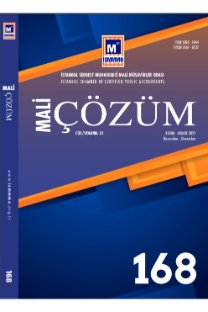Hile denetiminde yetkinliklerin değerlendirilmesi - hıle karosu
Hile konusunda çalışan pek çok uzman, araştırmaları Donald R. Cressey tarafından yürütülen, adı ise Joseph T. Wells tarafından konulan Hile Üçgenine aşinadır. Hile Üçgeni kişilerin hile yapma nedenlerini üç unsurun biraraya gelişine bağlamaktadır. Bu unsurlar baskı, fırsat ve haklı göstermedir. Ancak 2004 yılında David T. Wolfe ve Dana R. Hermanson, bu üç unsurun birarada var olmasının, her zaman hile olayının ortaya çıkmasına sebep olmayabileceğini, çoğu zaman üzerinde durulmayan ancak hilenin meydana gelişine neden olan bir unsur daha bulunduğunu ortaya koymuşlardır. Bu dördüncü unsur kişinin doğuştan gelen yetenekleri ve sonradan kazandığı becerileri yani yetkinlikleridir. Kişileri hile yapmaya iten unsurların değerlendirilmesinde yetkinliklerin dikkate alınması, hile üçgenini bir hile karosuna dönüştürmektedir.
Considering the capability concept in fraud auditing-the fraud diamond
Created by Donald R. Cressey and named by Joseph T. Wells, The Fraud Triangle has been a popular concept among fraud professionals. The Fraud Triangle explains why people commit fraud with the elements of pressure, opportunity and rationalization. However, in 2004, David T. Wolfe and Dana R. Hermanson suggested that the existence of the three elements are not enough to account for all the occurances of fraud and proposed capability of fraudsteras an additional element. The latter has not been considered as the major element but makes fraud possible. Capability explains not only inherent characteristics that a fraudster possesses but also the ones acquired through his/her lifetime. Taking the capabilities into account converts The Fraud Triangle to a Fraud Diamond.
___
- ACFE (2012) Report to the Nation on Occupational Fraud and Abuse. USA: ACFE.
- ACFE (2010) Report to the Nation on Occupational Fraud and Abuse. USA: ACFE.
- AICPA (2002). SAS No.99 Consideration of Fraud in a Financial Statement Audit. New York: AICPA.
- Albrecht, Steve W. (2003). Fraud Examination. USA: Thomson South- Western.
- Albrecht, W.Steve, Albrecht, Chad ve Albrecht, Conan C. (2008). Current Trends in Fraud and Its Detection, Information Security Journal: A Global Perspective. 17(2008): 2-12.
- Biegelmen, Martin T. ve Joel T. (2012). Executive Roadmap to Fraud Prevention and Internal Control Creating A Culture of Complience. New Jersey: John Wiley & Sons, Inc. Hoboken.
- Bingöl, Dursun (2010). İnsan Kaynakları Yönetimi. İstanbul: Beta Basım A.Ş.
- Bressler, Linda (2012). The Role of Forencic accountants in Fraud Investigations Journal of Finance and Accountancy. 9(2012): 1-9.
- Bozkurt, Nejat(2009). İşletmelerin Kara Deliği Hile Çalışan Hileleri. İstanbul: Alfa Basım Yayım Dağıtım.
- Carcello, Joseph V. ve Hermanson, Dana R. (2008). Fraudent Financial Reporting : How Do We Close the Knowledge Gap? The Institute for Fraud Prevention White paper.
- Dellaportas, Steven (2012). Converstations With Inmate Accountants: Motivation, Opportunity and the Fraud Triangle Accounting Forum. In Press. 20 Kasım 2012 tarihinde. ScienceDirect veri tabanından erişildi.
- Goldmann, Peter (2010). Financial Services Anti-Fraud Risk and Control Workbook. New Jersey: John Wiley & Sons, Inc. Hoboken.
- Kelly, Lorinda (2012). Beyond The Fraud Triangle: A Diamond Approach Deloitte Forencic Focus. June (2012): 1-2.
- Kranacher, Mary-Jo ve Stern, Lorraine (2004). Enhancing Fraud Detection Through Education CPA Journal. 74(2004): 66-67.
- Lister, Linda M.(2007). A Practical Approach to Fraud Risk Internal Auditor. 64(2007): 61-65.
- Murdock, Herman.(2008). The Three Dimensions of Fraud Internal Auditor. 65(2008): 81-83.
- Noe, Raymond A. (2008). Employee Training&Development./ çev. Edt. Canan Çetin New York: McGraw-Hill Irwin
- OGara, John D. (2004). Corporate Fraud Case Studies in Detection and Prevention. New Jersey: John Wiley & Sons Inc. Hoboken.
- Olagbemi, Felicia O. (2011). The Effectiveness of Federal Regulations and Corporate Reputation in Mitigating Corporate Accounting. USA: Xlibris Corporation.
- Omar, Normah Binti ve Din, Hesri Faizal Mohamad (2010). Fraud Diamond Risk Indicator: An Assessment of Its Importance and Usage 2010 International Conference on Science and Social Research (CSSR 2010), (5-7 December 2010) Malezya s.607-612.
- Padgett, Simon (2012). Profiling the Fraudster-A Step inside the Fraudsters Mind IIA Newspaper, 21(2012): 8.
- Pedneault, Stephen ve ötekiler (2012). Forensic Accounting and Fraud Investigation for Non-Experts. New Jersey: John Wiley & Sons, Inc. Hoboken.
- Ramos, Michael (2003). Auditors Responsibility For Fraud Detection Journal of Accountancy. 195(2003): 28-35.
- Rittenberg, Larry E., Schwieger, Bradley J. ve Johnstone, Karla M. (2008). Auditing A Bussiness Risk Approach. USA: Thomson South Western.
- Saruhan, Şadi Can ve Yıldız, Müge Leyla (2012). İnsan Kaynakları Yönetimi. İstanbul: Beta Basım A.Ş.
- The Treadway Commission (Ekim 1987) Report of the National Commission on Fraudulent Financial Reporting.
- Tugas, Florenz C. (2012). Exploring A New Element of Fraud: A Study on Selected Financial Accounting Fraud Cases in the World American International Journal of Contemporary Research. 2(2012): 112-121.
- Wells, Joseph T. (2001). Why Employees Commit Fraud. Journal of Accountancy. 191(2001): 89-91.
- Wolfe, David T. ve Hermanson, Dana R. (2004). The Fraud Diamond: Considering the Four Elements of Fraud The CPA Journal. 74(2004): 38-42.
- ISSN: 1303-5444
- Yayın Aralığı: Yılda 6 Sayı
- Başlangıç: 1991
- Yayıncı: İstanbul Serbest Muhasebeci Mali Müşavirler Odası
Sayıdaki Diğer Makaleler
Hile denetiminde yetkinliklerin değerlendirilmesi - hıle karosu
SENİHA DAL, Yıldırım Ercan ÇALIŞ
Muhasebe hilelerınin önlenmesive ortaya çıkarılmasında kullanılan çağdaş araç ve yöntemler
Canol KANDEMİR, Şenol KANDEMİR
KDV oranlarındaki değişikliğin Türk finansal kiralama sektörüne etkisi
